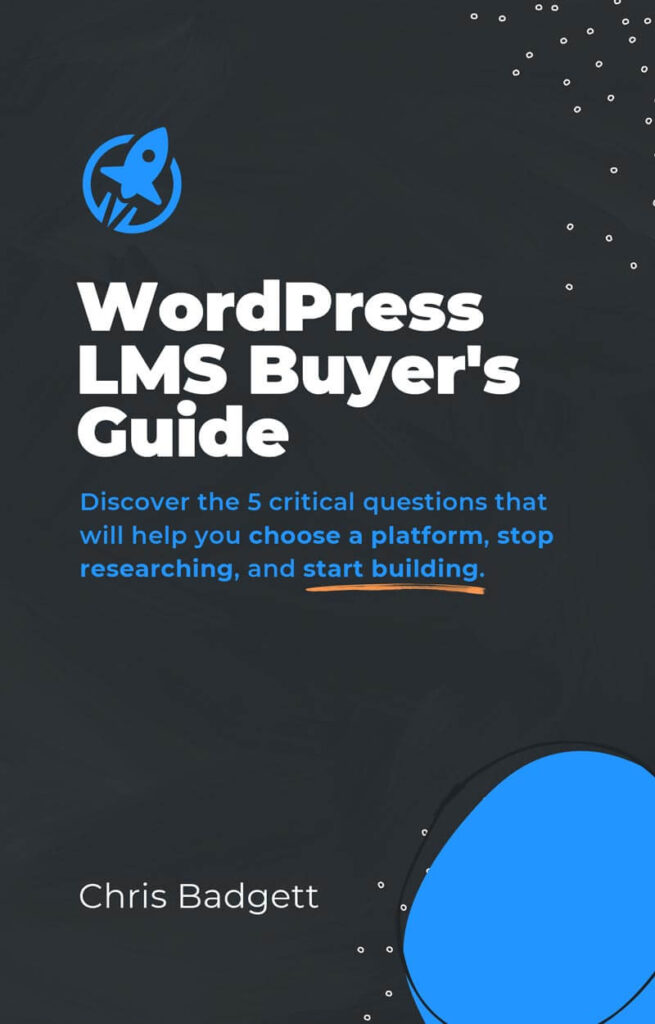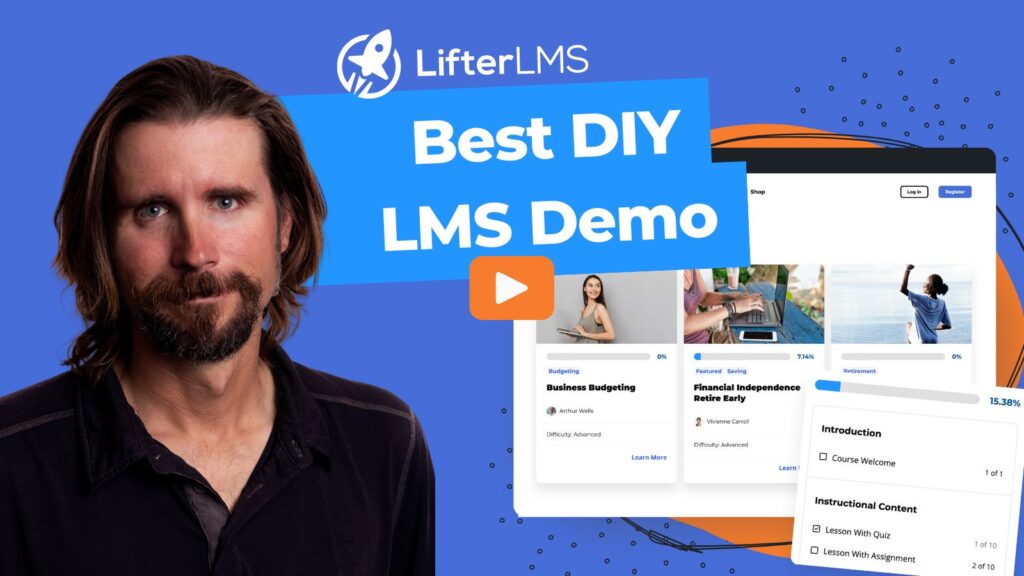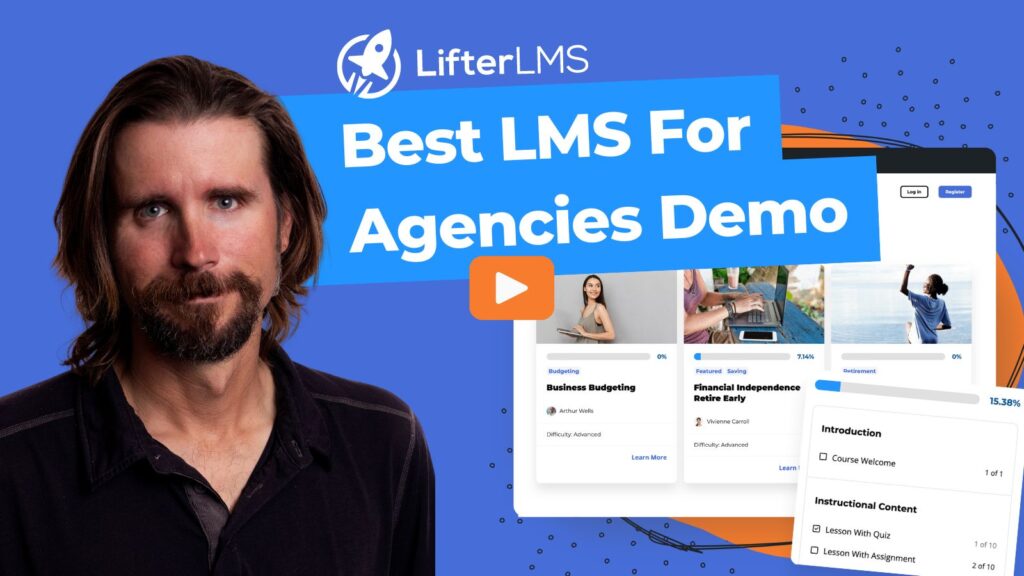
As entrepreneurs we all dream of a passive income…
…perhaps from creating an online course or product to share our expertise:
- to boost authority and impact
- grow revenue
- work for us while we sleep…
But where do we even start?
And how come others seem to manage it so easily?
The trick to a successful online course is honestly quite simple…but it’s often missed
How do you get the knowledge you have out into the world in a way that makes sense?
And more importantly:
Make sure it doesn’t flop?
Keep reading to learn how…
The Scaffold Solution: 5 Simple Steps To Creating a Successful Online Course Structure
Imagine scaffolding outside a new house
A scaffold provides strength, structure and support to the building
It’s a sum of combined parts…
Steel is strong on its own
But much more effective when used together
And that’s the same thing you need to understand when building your online course…
…you can either use any of the following 5 steps on their own and see improvement
or use them together to create an online course that will help you stand out among the crowd
How It Works:
The Scaffold Solution uses 5 key steps:
STEP 1 – Specific Outcome: Give your students a specific learning outcome
STEP 2 – Specific Structure: Package what you know into a system that makes sense for your topic
STEP 3 – Effective Content Consumption: Learn to deliver content effectively for different learning styles with blended learning
STEP 4 – Increase Interaction: And “hook” your students with gamification
STEP 5 – Re-Engagement: Increase profit and grow your tribe with the ‘Flipped Classroom Approach’
By the end of this guide you will have an actionable step-by-step process to increase the effectiveness, interaction and success of your course
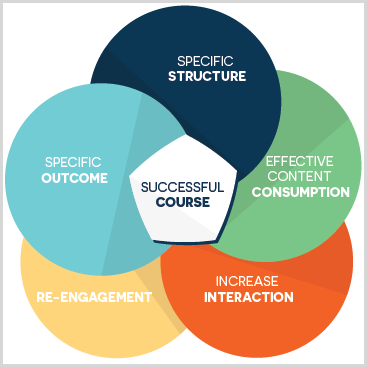
Let’s dive in . . .
Step #1: Give Your Students A Specific Goal To Increase Completion
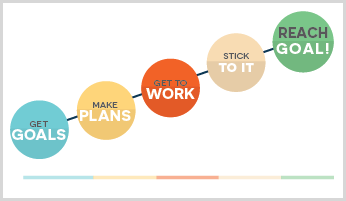
It’s interesting to note that most people will simply not complete your course content
They get busy, lose interest or lose focus
Which can be incredibly frustrating…
Because we WANT our students to succeed
But what can we do to boost completion rates?
The first step is to begin with the end in mind…
Counter-intuitive?
Maybe
But it makes sense…
If you throw your content into your LMS (learning management system) and just hope people follow along until they come to a sort of result…
You’ll lose people fast
But if you take the time to set up your course and think about how your students will get to their one desired outcome…
…you’ll create a thriving community (and keep refunds at rock bottom)
Remember:
“People will remember the work you do for giving people a breakthrough”
The Impact Equation // Chris Brogan // Julian Smith
Give your students a breakthrough!
A concrete and quantifiable result so that they don’t just follow through and complete your course…
But become evangelists for your brand
(You always remember those who helped you out…even if you paid for the privilege)
Example:
Take this successful course by Gail Sibley
(She teaches people how to paint using pastels)
Here is Gail’s specific outcome:

This works because it’s:
- Time Specific and Measurable (‘by the end of this course‘)
- Selling a ‘breakthrough’ from a pain-point (‘you will be confident in heading out on location’)
- Tells you exactly what your result is (‘a beautiful pastel with ‘essence of the place’)
So ask yourself:
“What breakthrough am I giving my students?“
Use Gail’s outcome template as inspiration
By “time period to complete” you will “specific goal” and achieved “X result“
Example:
In just 3 weeks you will learn to play the guitar and impress your friends
So now you have a specific outcome in place for your students it’s time to start thinking about how to actually deliver your course…
How do you start to package your knowledge into a successful structure?
Lots of people think long and hard about the content of their course (which we will talk about soon)
But it’s really the cadence of the course content that will help naturally click your key points into place…
It’s about articulating your ideas so they make a lasting impression on your students – minus any confusion.
Which leads us to…
Step #2: Package What You Know Into A Structure That Makes Sense (And Skyrocket Completion)
You now have your one desired outcome
The next step is to ask:
“What is the most effective way for me to get my students there?“
We asked Pat Flynn over at smartpassiveincome.com what’s one big mistake you can make when building an online course
“When creating an online course, don’t forget about the user experience and navigation through your content”
Pat Flynn
Words of wisdom from Pat
But how do you create a course that smoothly brings people to their ‘aha’ moment?
Let’s talk about a Huge Online Learning Myth…
We see the same advice being recycled for courses on:
- Facebook adverts
- basket weaving
- playing the guitar
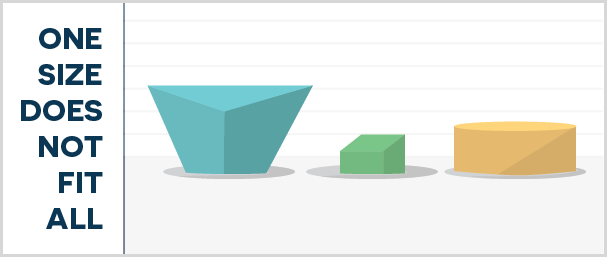
And therein lies the problem
There is no specific “template” that fits all courses…
When it comes to building a course that sells there are two things that matter:
- How engaged your students are
- How well you guide them to their outcome
And that’s it.
As an education entrepreneur you have a responsibility to get your students to their desired result as quickly and effectively as possible
Hopefully without being:
- boring
- generic or
- overwhelming
And it’s hard when there’s a ton of non-specific advice out there for educators.
But the truth is we don’t learn how to play the guitar the same way as we learn how to do something dynamic like a Facebook advert.
The brain’s learning process is different…
Following generic advice may lead you to an inappropriately structured course for your learning outcome.
But what if I told you we can actively avoid a poorly structured course by leveraging human behavior?

Here’s the thing:
We have spent a lot of time studying how different learning outcomes can be nurtured by specific structures
And we started to notice patterns…
We worked hard to formulate three solid course structures designed around a learning outcome
I’ve outlined them below but firstly, ask yourself:
“What is the most effective way of getting my students to their learning outcome?”
Will my students need:
- A step-by-step process
- To make a behavioral change
- Or a reference guide
If you understand this in advance it can save headaches when planning and increase your student interaction
So let’s flesh these out a little and look at examples.
The Step-by-Step Structure
This structure is designed to guide your students to a quantifiable result
A direct path from a to b
(Perfect for learning a new skill; for example learning how to play a song on the guitar)

The Behavioral Change Structure
Used when you need to get students to create a habit
Be it a:
- diet
- workout plan
- or anything that requires a change in their lifestyle
It can be complex because you are trying to encourage motivation.
But if you follow this structure it may help make the learning process a little easier
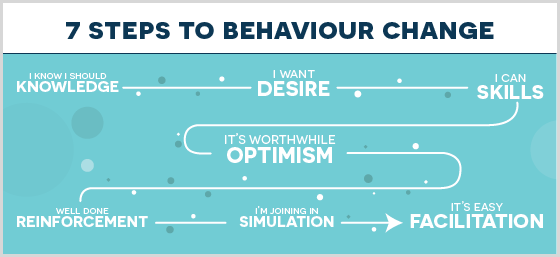
The Reference Guide Structure
Useful when your learning outcome is dynamic and changes often…
So to save you diving into your course all the time to make changes you could structure your course to look like this:
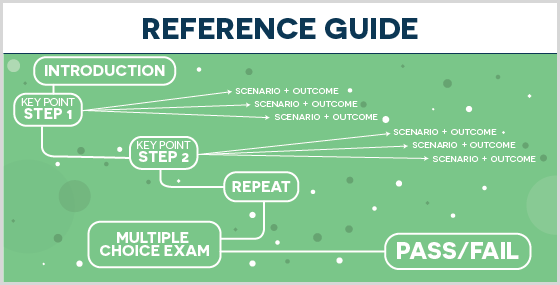
So when planning your course it’s vital to ask in advance:
“What is the outcome I desire and the structure to make it happen?”
Then model your course around that learning outcome by using one of the course blueprints outlined above
This will give you a much clearer idea of how to present your content in a logical structure…
This is starting to come together nicely:
We know that your content needs to be structured specifically towards an outcome
But what format of content will work best for your course?
Step #3: Leverage ‘Blended Learning’ For Different Learning Styles (And Keep Your Students Up To 70% More Engaged)
Which learning style are you?
Visual, kinesthetic, aural or tactile?
Or are you a blend? (A friend of mine learns best whilst running and listening to a podcast)
More importantly…
Which learning style are your students?
You just can’t tell (especially since most people don’t even know themselves)
But by employing the next easy concept you can still deliver your key points and create a supportive digital learning environment for everyone…
…regardless of how differently we all retain information
So what exactly is Blended learning?
Blended learning is the concept of delivering your course through different mediums such as multimedia, quizzes, student interaction and face-to-face time with the instructor
This ‘blended learning’ approach works really well for actively engaging students so they can learn at their own pace
One study suggests that up to 70% of adult learners ‘learn better in a blended environment’
Another by Educause Center For Applied Research reinforces
“blended courses have the potential to increase student learning outcomes whilst lowering attrition rates.”
But why does blended learning work so well?
Let’s look at the four different learning styles and how to adapt your course content specifically for your audience:
The 4 Learning Styles
Visual
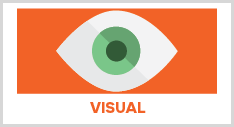
You can help the visual learners by simply including:
- charts
- graphics
- demonstrations
- screenshots and
- graphs
(To illustrate your key points make sure you add why you are doing a task so they can see the bigger picture)
Kinesthetic
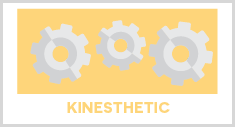
Some people ‘learn by doing‘
Include a ‘Now you do it’ section at the end of each module or get them to action what they have learned to reinforce the learning process
Aural
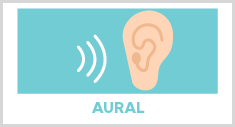
An audio version of your course will work great for the auditory learners
Make sure to give facts and figures so difficult concepts are delivered clearly
Tactile
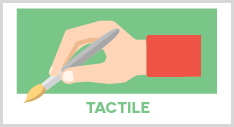
Tactile learners like to learn at their own pace
Simply create downloadable resources such as PDF’s. They can print and download it to read it later
Leveraging both reading and writing can help deliver to your tactile student
Remember:
Spending a little extra time here when you create an online course will make all the difference to to your student’s completion level
You’ll position yourself as a great teacher because you have been considerate in the learning process…and its fairly easy to do:
If you create screencast videos on software like Camtasia its very easy to:
- Record the video
- Separate the audio
- Use the screencast images as a slideshow
- Transcribe the audio into written content
Let’s look at Ramit Sethi’s Zero To Launch course and how he delivers his content to cater for different learning styles.
Below is a snapshot of the bar underneath his training videos, and I’ve highlighted how he’s catered to the types of learners:

Providing all these options will make your whole course more compelling and easier to learn from (And raise the perceived value of the course…)
So now you have:
- A Specific Outcome
- A Structure that makes sense
- Increased the effectiveness of your course content
There are a few more things we can leverage to make your course stand out from everyone else…
And when we add the next step your course will start to come to life…
STEP 4 – Increase Interaction And “Hook” Your Students With Gamification

People really love to play games…
How else could Riot’s insanely popular game ‘League of Legends’ get 27 million users per day?
The basic concept is the gamer controls a ‘champion’
The ‘champion’ start off weak but increases in strength as they accumulate experience
But what does this have to do with your online course?
League of Legends follows a reward based structure which has helped catapult the game way ahead of it’s direct competitors and earn them USD$624M in 2013.
This tells us how powerful gamification really is…
By adding rewards at the end of course milestones you can keep your students engaged and eager for more
Our brain loves being rewarded for its effort
When we complete a task and get positive reinforcement with a reward (perhaps in the form of a certificate or badge) it aids information retainment and speeds progress
Let’s look at ways we can integrate gamification through your online course…
Quizzes
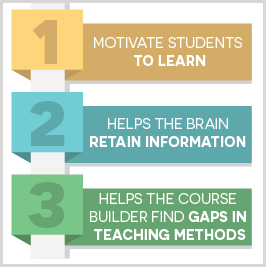
I know what you’re thinking:
“Won’t quizzes insult my student’s intelligence? Aren’t they super boring?”
If you have any negative connotations from school then it’s time to let them go!
Short quizzes at the end of the module will actually amplify your results in three ways:
- They motivate your students to learn
When someone gets negative feedback (by getting a question wrong) students are more likely to ‘level up’
(Improve the gap in their skill set)
- They help your brain retain information
It’s simple to make a quiz – just take out the key points from the module that you’d like people to remember
Then reinforce the learning process by asking questions surrounding those key points
- They help you (as a course builder) to see any gaps in your teaching
If students are failing a question over and over it may be time to re-evaluate your delivery and key points
Quizzes don’t have to be tedious…
Here’s a quick checklist for fun, short and relatively easy quizzes:
- Multiple Choice
- True/False
- Get them to take a photo of their work and send it to you for assessment
Then strategically place a harder assessment at the end of your course to create a great feedback loop for you and your students.
Free Bonuses
Surprise your students with free bonuses as an extra way to ‘gamify’ your course…
They can nudge someone sitting on the fence to the ‘buy now’ button with a tantalizing free bonus video, interview or product.
Just make them both interesting and relevant!
For example if I were selling a course on ‘How to sculpt a 6 pack in 8 weeks’ great bonuses could be:
- an inspiring interview with a world champion body builder on how to track progress
- a free PDF guide on how to replace junk food with healthy alternatives
- a free mini course on how to push past mental barriers
- access to an informative webinar
- tickets to a live expo / fitness event
Be creative and set yourself apart in a crowded market with tantalizing bonuses.
Certificates / Badges

The folks over at Digital Marketer send a certificate to everyone who complete their online certification programs
And not just a piece of paper… it arrives in a professional black file
You betcha those certificates are proudly displayed at home and in the office!
Giving your student something tactile like a cool certificate is a great way to boost credibility
(It also positions you as an authority for granting them the certificate…)
For this step:
Have a look through your course and see where you can add more engagement with gamification:
- At the end of each module?
- Throughout a video?
- What about at the end of each lesson?
The fun doesn’t stop there though… in fact if you truly want to create an impact with your audience then step 5 is a great way to:
STEP #5: Re-Engage, Increase Profit and Grow Your Tribe With The “Flipped Classroom Approach”
This problem happens to so many online educators…
They lose their momentum:
How?
By falling into the trap of being one dimensional with their course delivery!
Imagine a regular classroom for a moment
Most of the learning happens in the classroom then students may head away for a field trip…
In a flipped classroom the opposite happens
Most of the learning process happens outside the classroom
Learners then come to live events to get feedback from each other and teachers
It’s a win-win for everyone
The students get valuable time with you and get to interact and share ideas
The educator gets to gain great insights on their market (What language are they using to interact? What are their biggest pain points etc?)
And hey presto!
You have the research for your next course idea
It’s only natural for the people who leave your course to want more from you…in fact by not providing the next step for them your doing them a disservice!
So here’s three ways you can build an online community that will stand the test of time long after they complete your course:
- Webinars

Danny Iny from Mirasee.com has used webinars to engage with his audience and provide a real community feel…
In fact his online program Course Builder’s Laboratory has helped over 4000 value-driven entrepreneurs find their feet online
Transforming lessons into events is a great way to build hype in your community (it could even double as a free bonus)
- Physical meet-ups and events
Bring in paid speakers to chat with your audience and let your community develop and grow in-person
- Create a group on a social platform with member-only access
Private groups are perfect for students to bounce ideas around and ask questions. It also builds a sense of exclusivity and community
Conclusion
So you now have a 5 step process to help create a great online course
Now if all this feels a little overwhelming don’t forget that even if you implement just one step from this list when you are building your course then you’ve already got an advantage over most people in your industry
But remember:
If you can provide all five core concepts in Scaffold Solution, you’ll help your students learn more effectively
But really it’s about creating an exciting and compelling learning environment…
…and it’s more important to develop a human connection than to get hung up on all the ‘white noise’ out there on education methods
And that’s the beauty of being in control of your own product
You can keep adding value by strengthening elements as you go along:
STEP 1) Give your students a breakthrough
STEP 2) Use a course structure that makes sense
STEP 3) Keep students engaged by applying blended learning and catering to different learning styles
STEP 4) Look for places to add gamification to encourage and reinforce the learning process
STEP 5) Find ways to keep students engaged even after they have left the course
I need you to do 2 things for me now:
Firstly, I’d greatly appreciate it if you leave a comment below to let me know how you’re going to use The Scaffold Solution in your course…
Second:
If you have a friend or colleague who is creating an online course and could benefit from this article, then please click the easy share button on the left and tag them in it (Or go old school and email them the link)



